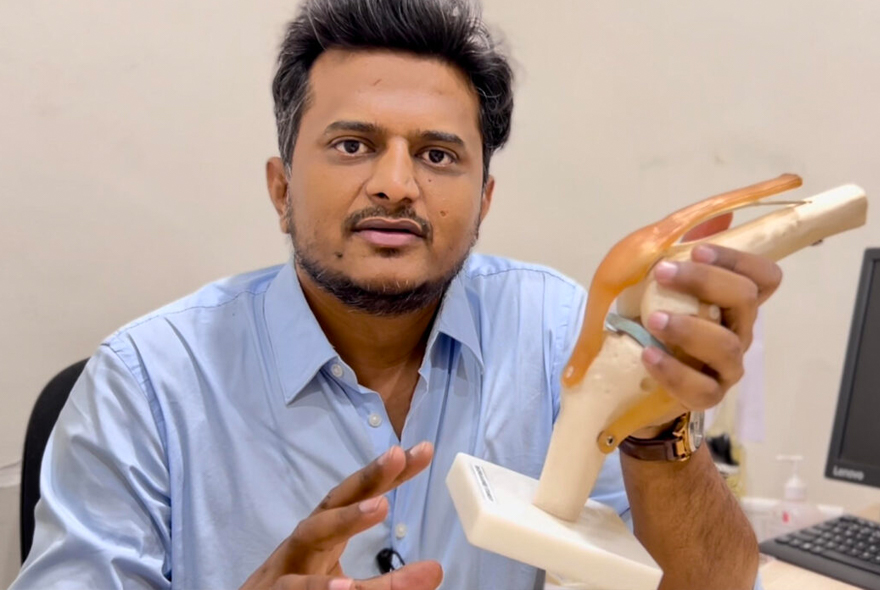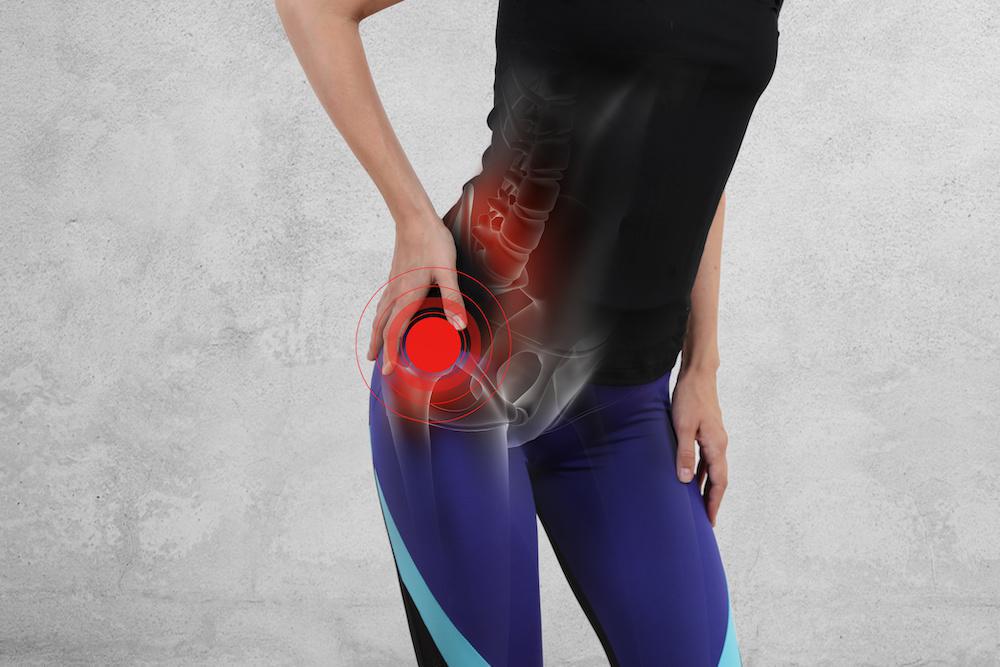The Anterior cruciate ligament (ACL) is a strong, fibrous band of tissue that connects the femur to the tibia and keeps the knee from moving too much. It also aids in knee stability during certain movements such as pivoting or cutting. The ACL can be torn as a result of an injury, most commonly when a person falls on their knees. This is referred to as an acute ACL tear. An ACL tear can occur in one or all parts of the ligament. A complete ACL tear involves tearing all of the ligament’s fibres, resulting in knee joint instability.
Collateral Ligaments:
The MCL is located on the inside of your knee and controls your knee’s side-to-side motion.
The LCL is located on the outside of your knee and controls your knee’s side-to-side motion as well as bracing it against unusual sideways movements.
Collateral Ligaments:
The cruciate ligaments are found in the knee. They give the knee stability. The Anterior and Posterior Cruciate Ligaments cross at right angles with each other. These ligaments function as a hinge, allowing the knee to bend only so far before becoming overly tight. When these ligaments are torn, the knee becomes unstable and painful.
Description:
The majority of ACL tears occur when a person falls while running, jumping, or engaging in any activity that involves a sudden twisting motion. An ACL rupture is a type of ACL injury. It occurs when the ACL is torn from its attachment points at the top and bottom of the tibia and femur. During movement, the ACL helps to stabilise the knee joint. If you injure your ACL, you may experience pain in the front of your thigh and swelling around the knee. If you try to move your leg, you may experience pain.
ACL partial tears are uncommon and can be treated nonsurgically; most ACL injuries are complete or near complete tears. In high-demand activity people or athletes, surgery may be required to regain stability and performance level.
Cause:
The ACL is injured when it is stretched beyond its normal length and then pulled out of place. This can occur as a result of a direct blow to the knee or as a result of overstretching the knee/ twisting of knee as during sports activities.
ACL injuries can occur in the following ways:
- Changing direction quickly while running
- Suddenly coming to a halt in an unusual knee position
- Landing from a jump with an inward motion of the knee
- Direct contact or hit by another person on the outside of the knee, as in football Direct hit or
- injury on the outside of the knee and bending leg outwards, as in accidents
Because of physical conditioning, muscular strength, neuromuscular control, leg alignment, and the effect of oestrogen on ligament properties, females are more likely to have ACL tears.
Symptoms:
When your anterior cruciate ligament is injured, you may hear a “popping” sound and feel your knee give out from under you.
Other common symptoms include:
Pain and swelling Your knee will swell within 24 hours. If the swelling and pain are ignored, they may resolve on their own. If you try to return to sports, your knee will most likely be unstable, and you risk further damage to your knee’s cushioning cartilage (meniscus).
Full range of motion may be lost.
Tenderness along the line of the joint
Walking in discomfort
Risk elements
ACL injuries can be caused by a variety of factors, including:
Being female — possibly due to anatomical differences, muscle strength, and hormonal influences
Sporting activities such as soccer, football, basketball, gymnastics, and downhill skiing
Inadequate conditioning
Using incorrect movement patterns, such as squatting with the knees inward
Wearing improperly fitting footwear
Using sloppy sports equipment, such as ski bindings that aren’t properly adjusted
Playing on synthetic turf
Treatment Without Surgery
Nonsurgical treatment options include progressive physical therapy and rehabilitation, which can return the knee to its pre-injury state and educate the patient on how to avoid instability. This can be supplemented by wearing a hinged knee brace. However, many people who choose not to have surgery may suffer secondary knee injury as a result of repeated instability episodes.
When dealing with multiple injuries, surgical treatment is usually recommended (ACL tears in combination with other injuries in the knee). However, for some patients, avoiding surgery is a viable option. In patients with isolated ACL tears, nonsurgical management is likely to be successful or may be indicated:
With partial tears and no symptoms of instability
With complete tears and no symptoms of knee instability during low-demand sports and a willingness to forego high-demand sports
Who do light manual labour or lead sedentary lives
Whose growth plates are still available? (children)
urgical Intervention
ACL tears are rarely repaired with suture because repaired ACLs have been shown to fail over time. As a result, the torn ACL is usually replaced by a tendon substitute graft. However, in clear tear and good ACL tssue, ACL tear repair can be considered.
Autograft of the patellar tendon (autograft comes from the patient)
Autograft of the hamstring tendon
Autograft of the quadriceps tendon
Patellar tendon, Achilles tendon, semitendinosus, gracilis, or posterior tibialis tendon allograft (taken from a cadaver)









